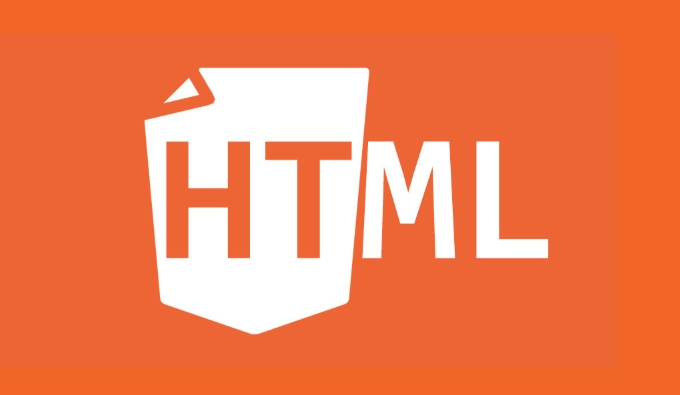To make iframes responsive, the core is to use CSS to control the aspect ratio and combine it with the wrapping container to achieve adaptation. 1. Use padding techniques to create container boxes with fixed proportions. Common ratios such as 16:9 correspond to padding-top 56.25%, 4:3 correspond to 75%, 1:1 correspond to 100%; 2. Set the iframe width to 100% and use absolute positioning to fill the container, or use the aspect-ratio attribute to maintain the proportion; 3. Control the ratio by container wrapping when handling third-party embedding content, and make sure to add the allowfullscreen attribute to support full-screen playback on mobile. Mastering container and scale settings can realize the responsive layout of iframes.

To make an iframe responsive, the core is to enable it to automatically adjust the aspect ratio as the screen size changes, rather than fix the size. The key to implementation is to use CSS to control the width and height ratio of the iframe and adapt it with the container.

1. Basic structure: wrap an iframe with a container
The iframe itself does not have good proportion control capabilities, so we usually use a "wrap container" to control its height and proportion. A common practice is to use padding techniques to create a box with a fixed aspect ratio.
<div class="iframe-container"> <iframe src="https://example.com" frameborder="0"></iframe> </div>
Then set the container's scale through CSS:

.iframe-container {
position: relative;
width: 100%;
padding-top: 56.25%; /* Default 16:9 ratio*/
height: 0;
}
.iframe-container iframe {
position: absolute;
top: 0;
left: 0;
width: 100%;
height: 100%;
}-
padding-topis the key: it calculates the height based on the container width, thus keeping the scale unchanged. - padding-top corresponding to common proportions:
- 16:9 → 56.25%
- 4:3 → 75%
- 1:1 (square) → 100%
2. Adaptive width: Make sure the iframe follows the parent container scale
The width of the iframe itself is set to 100%, so that the container can be automatically filled. As long as the container is responsive, the iframe will change.
If you don't want the iframe to be limited to a fixed ratio, you can also set it directly:

iframe {
width: 100%;
height: auto;
aspect-ratio: 16 / 9; /* Modern browsers support this property*/
} But be aware that aspect-ratio may not be supported in older browsers.
3. Responsive embed FAQ handling
Sometimes you embed third-party content, such as YouTube or Google Maps, may have their own styles that interfere with your layout.
YouTube example:
<iframe src="https://www.youtube.com/embed/xxxxx" frameborder="0" allowfullscreen> </iframe>
At this time, you can continue to use the container method mentioned above to wrap it. In addition, remember to add the allowfullscreen attribute to ensure that the mobile terminal can play full screen.
Altitude issues when embedding a map:
Map iframes often require a certain height to display normally. It is recommended not to set a fixed height, but to use the padding method mentioned above to ensure the proportion.
Basically that's it. Master the container control and proportional settings, and the iframe can adapt well to various devices. Although it seems simple, it is easy to ignore the coordination of proportions and containers in practical applications. A little attention can avoid many problems.
The above is the detailed content of How to make a responsive iframe?. For more information, please follow other related articles on the PHP Chinese website!

Hot AI Tools

Undress AI Tool
Undress images for free

Undresser.AI Undress
AI-powered app for creating realistic nude photos

AI Clothes Remover
Online AI tool for removing clothes from photos.

Clothoff.io
AI clothes remover

Video Face Swap
Swap faces in any video effortlessly with our completely free AI face swap tool!

Hot Article

Hot Tools

Notepad++7.3.1
Easy-to-use and free code editor

SublimeText3 Chinese version
Chinese version, very easy to use

Zend Studio 13.0.1
Powerful PHP integrated development environment

Dreamweaver CS6
Visual web development tools

SublimeText3 Mac version
God-level code editing software (SublimeText3)

Hot Topics
 Explain the purpose of the role attribute in ARIA.
Jun 14, 2025 am 12:35 AM
Explain the purpose of the role attribute in ARIA.
Jun 14, 2025 am 12:35 AM
ARIA's role attribute is used to define the role of web elements and improve accessibility. 1. Role attribute helps assistive technology to understand the functions of elements, such as buttons, navigation, etc. 2. Use role attributes to assign specific roles to non-semantic HTML elements. 3. The role attribute should be consistent with the element behavior and be verified by the accessibility tool test.
 HTML and Design: Creating the Visual Layout of Websites
Jun 14, 2025 am 12:39 AM
HTML and Design: Creating the Visual Layout of Websites
Jun 14, 2025 am 12:39 AM
How to create a website layout? 1. Use HTML tags to define the content structure, such as, ,. 2. Control styles and positions through CSS, using box model, float or Flexbox layout. 3. Optimize performance, reduce HTTP requests, use cache and optimize images, and ensure responsive design.
 How can you ensure your HTML code is readable and maintainable?
Jun 10, 2025 am 12:06 AM
How can you ensure your HTML code is readable and maintainable?
Jun 10, 2025 am 12:06 AM
Improve the readability and maintainability of HTML code can be achieved through the following steps: 1. Use semantic tags, such as, etc. to make the code structure clear and improve SEO effect; 2. Keep the code formatted and use consistent indentation and spaces; 3. Add appropriate comments to explain the code intention; 4. Avoid excessive nesting and simplify the structure; 5. Use external style sheets and scripts to keep the HTML concise.
 How do I stay up-to-date with the latest HTML standards and best practices?
Jun 20, 2025 am 08:33 AM
How do I stay up-to-date with the latest HTML standards and best practices?
Jun 20, 2025 am 08:33 AM
The key to keep up with HTML standards and best practices is to do it intentionally rather than follow it blindly. First, follow the summary or update logs of official sources such as WHATWG and W3C, understand new tags (such as) and attributes, and use them as references to solve difficult problems; second, subscribe to trusted web development newsletters and blogs, spend 10-15 minutes a week to browse updates, focus on actual use cases rather than just collecting articles; second, use developer tools and linters such as HTMLHint to optimize the code structure through instant feedback; finally, interact with the developer community, share experiences and learn other people's practical skills, so as to continuously improve HTML skills.
 How do I use the element to represent the main content of a document?
Jun 19, 2025 pm 11:09 PM
How do I use the element to represent the main content of a document?
Jun 19, 2025 pm 11:09 PM
The reason for using tags is to improve the semantic structure and accessibility of web pages, make it easier for screen readers and search engines to understand page content, and allow users to quickly jump to core content. Here are the key points: 1. Each page should contain only one element; 2. It should not include content that is repeated across pages (such as sidebars or footers); 3. It can be used in conjunction with ARIA properties to enhance accessibility. Usually located after and before, it is used to wrap unique page content, such as articles, forms or product details, and should be avoided in, or in; to improve accessibility, aria-labeledby or aria-label can be used to clearly identify parts.
 How do I create a basic HTML document?
Jun 19, 2025 pm 11:01 PM
How do I create a basic HTML document?
Jun 19, 2025 pm 11:01 PM
To create a basic HTML document, you first need to understand its basic structure and write code in a standard format. 1. Use the declaration document type at the beginning; 2. Use the tag to wrap the entire content; 3. Include and two main parts in it, which are used to store metadata such as titles, style sheet links, etc., and include user-visible content such as titles, paragraphs, pictures and links; 4. Save the file in .html format and open the viewing effect in the browser; 5. Then you can gradually add more elements to enrich the page content. Follow these steps to quickly build a basic web page.
 What is an HTML tag?
Jun 13, 2025 am 12:36 AM
What is an HTML tag?
Jun 13, 2025 am 12:36 AM
HTMLtagsareessentialforstructuringwebpages.Theydefinecontentandlayoutusinganglebrackets,ofteninpairslikeand,withsomebeingself-closinglike.HTMLtagsarecrucialforcreatingstructured,accessible,andSEO-friendlywebpages.
 How do I create checkboxes in HTML using the element?
Jun 19, 2025 pm 11:41 PM
How do I create checkboxes in HTML using the element?
Jun 19, 2025 pm 11:41 PM
To create an HTML checkbox, use the type attribute to set the element of the checkbox. 1. The basic structure includes id, name and label tags to ensure that clicking text can switch options; 2. Multiple related check boxes should use the same name but different values, and wrap them with fieldset to improve accessibility; 3. Hide native controls when customizing styles and use CSS to design alternative elements while maintaining the complete functions; 4. Ensure availability, pair labels, support keyboard navigation, and avoid relying on only visual prompts. The above steps can help developers correctly implement checkbox components that have both functional and aesthetics.






